
Photographs of H.R.H., Prince Basundhara of Nepal and D'Lynn
See also.- War in the Himalayas -Life in the Himalayas- Massacre in Palace -

![]()
Photographs of H.R.H., Prince Basundhara of Nepal and D'Lynn
See also.- War in the Himalayas -Life in the Himalayas- Massacre in Palace -
The troubled expressions in the photograph below reflect that they had just learned that the king of Nepal was secretly allowing the Red Chinese to build a road through Nepal that could potentially be used to invade Nepal and India, and indeed a few years later China did invade India through the Himalayas.
D'Lynn had met the King in his palace, and had gone hunting with just the king and Prince Basundhara. D'Lynn was also personal friends with many members of the Royal Family, including Prince Basundhara's mother, brother, and sisters (see picture below). D'Lynn's parents also came to know Prince Basundhara and other members of the Royal Family well.
THIS TEXT CONTINUES BELOW THE PHOTOGRAPHS.
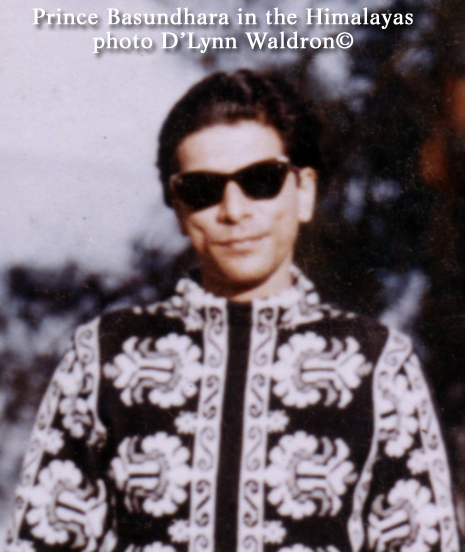
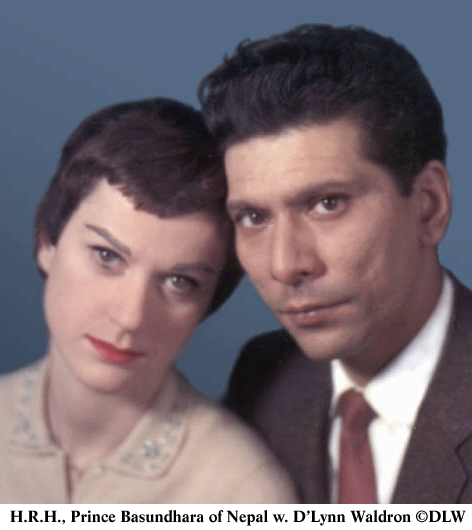
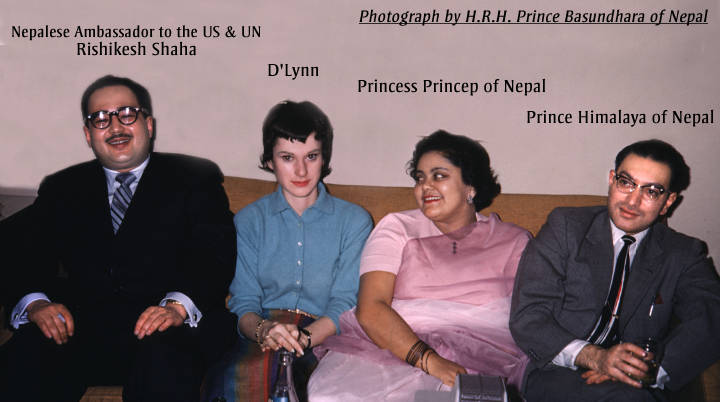
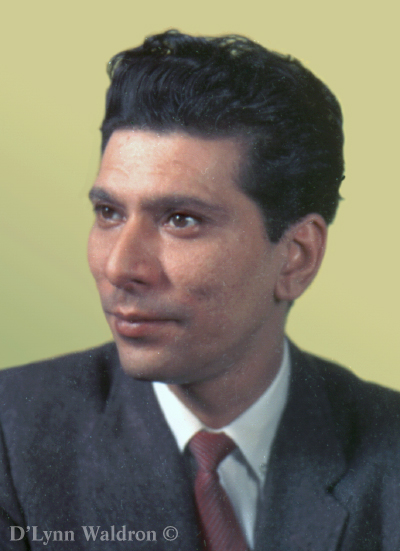
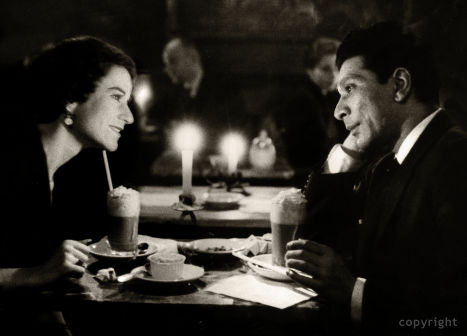

The Royal Family announced approval without any restrictions or conditions of Prince Basundhara's marriage to D'Lynn in a press release issued from the UN office of Nepal's Ambassador to the United States, and this was published in the New York Times. Then afterwards D'Lynn was unexpectedly prohibited from entering Nepal, where she would have had unique freedom to travel in the area of the secret road building while carrying out the ethnographic study she and the prince were planning.
The prince was ordered to return to Nepal on the pretext of signing the official papers that would put any children he had with D'Lynn in the royal line of succession. His mother, The Queen Mother, who was in New York at the time with him and D'Lynn, was very afraid and warned him not to go back to Nepal, and indeed he was held incommunicado and not allow to leave Nepal for some months. When he was allowed to go abroad again, he was told he could not go to the United States, but he flew to meet D'Lynn in Hawaii, which was not yet a state.
Unwanted publicity revealed to the king that the prince was with D'Lynn in Hawaii, and the prince was ordered to return to Nepal or lose his citizenship and have all his property confiscated, a fate which befell the members of the first elected parliament when the king had his troops sweep through the capital and imprison them. Those who were abroad had a choice of returning to a very uncertain fate, or having everything their families possessed confiscated. (You can see the headline stories about all these things by using the click throughs on the author page.)
Prince Basundhara was with D'Lynn in Hong Kong in the winter of 1960, and they were listening to the BBC when the news of the King's coup against the elected parliament was broadcast. The Prince was shocked and horrified because he had been an advocate of democracy for Nepal and a friend of parliamentarians arrested by the king. For his own safety, from this time on Prince Basundhara had to be very circumspect about his marriage to an American, especially after Prime Minister Nehru said publicly he wanted King Mahendra replaced with Prince Basundhara, after Nehru had invited D'Lynn, with her parents, to his home.
The excerpts at the bottom of this page from the June 2001 story in the Washington Post describe the Royal Family as living in seclusion and secrecy at the time of their massacre by Crown Prince Dipendra. When D'Lynn first knew the Royal Family in 1958 and '59, they enjoyed freely associating with foreigners, and the secrecy and paranoia came only after the secret agreement to let China build a road through the Himalayas, and then the king's coup against the democratically elected parliament.
Photographs copyright 1959 by D'L.W.-S., Reproduction Prohibited
![]()
--------------------------------------------------------------------------------------------------------------------------------------------------------
For Nepal's Crown Prince, Palace Was Also a Prison.
By Pamela Constable
Washington Post Foreign Service
Monday, June 11, 2001 c
KATMANDU, Nepal --
The world may never know why Dipendra Bir Bikram Shah Dev, the 29-year old heir to Nepal's throne, picked up two assault rifles and killed his father, King Birendra, and eight other relatives in Katmandu's royal palace on theevening of June 1.
... Dipendra's publicity-allergic family rarely mingled with commoners and even barred foreign-born spouses of royals from visiting Narayanhiti Palace... .... a palace known for secrecy. ....So strong are such prejudices that several immediate members of the late king's family who married foreigners were forced to give up their titles, and their spouses were banned from palace events.
For generations, Nepali parents have passed on to their children a traditional warning:
“Serve your country and your flag, but don't go into the palace.”
Rumors of palace intrigue remain a staple of private conversations -- but virtually no one will repeat them on the record.
From the 1700s, when the current Shah dynasty took power, the royals were constantly at war with other noble clans. In 1846, virtually the entire noble class was wiped out (note: at a dinner party. dlw) in a palace massacre that left the Shahs as figurehead kings but enshrined the aristocratic Rana clan as the power behind the throne for the next century.
Even by the standards of Nepal's troubled royal history, this was the first time a reigning monarch had been killed.
© 2001 The Washington Post Company